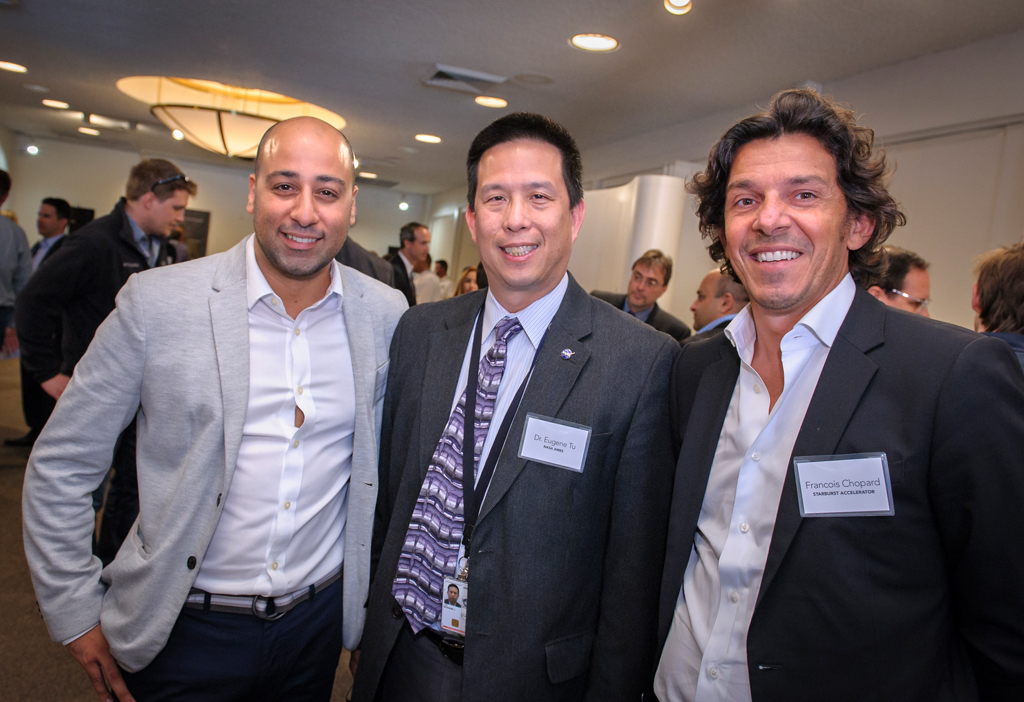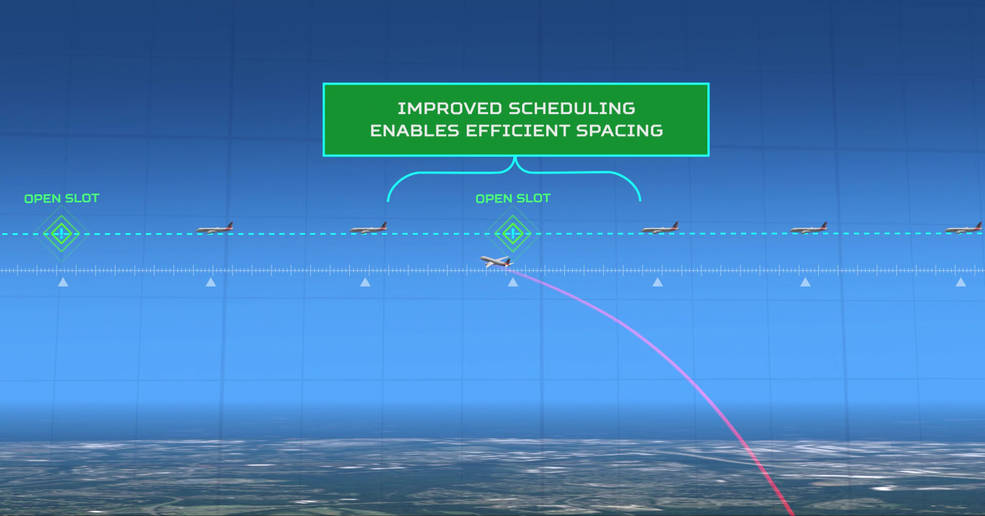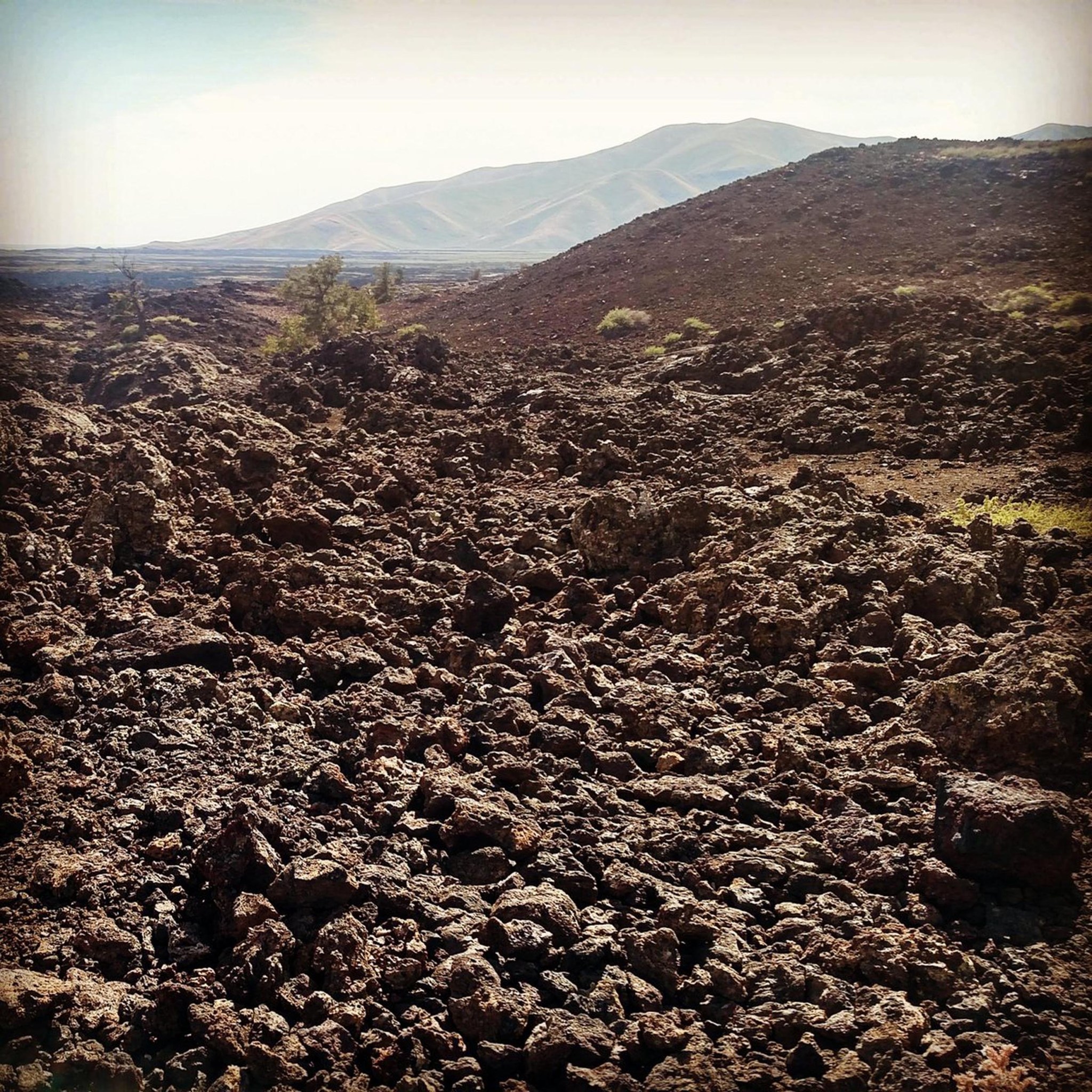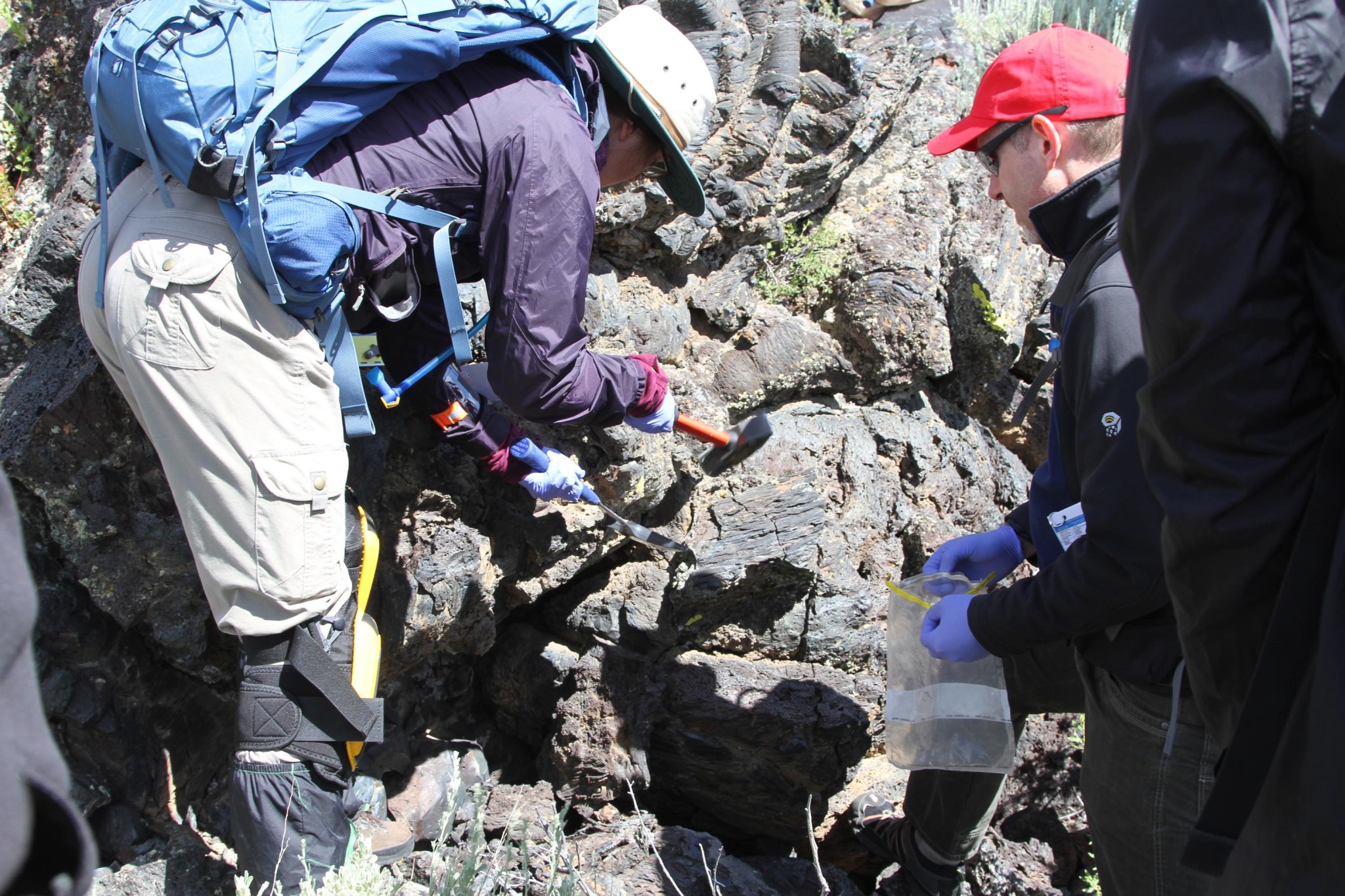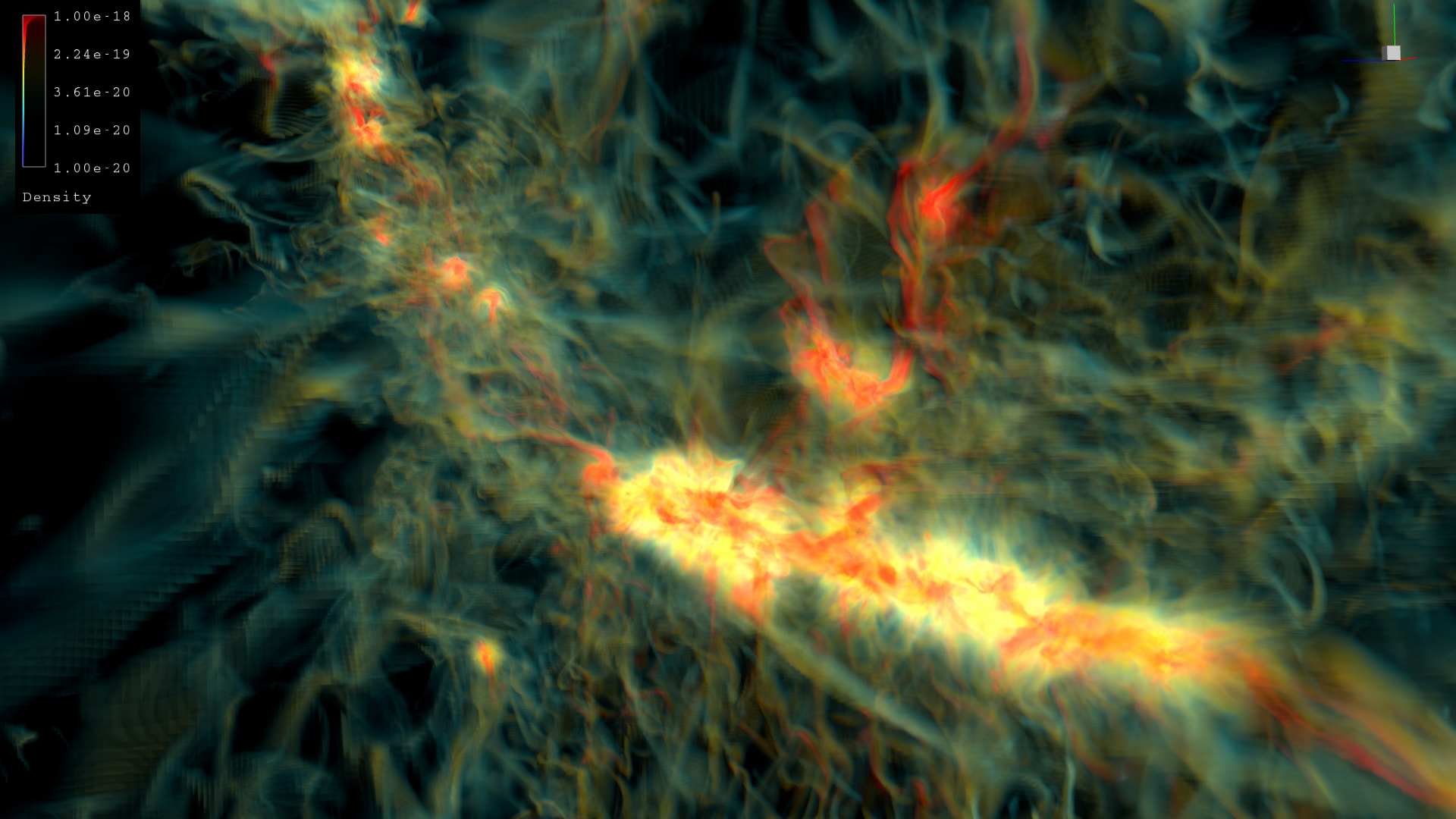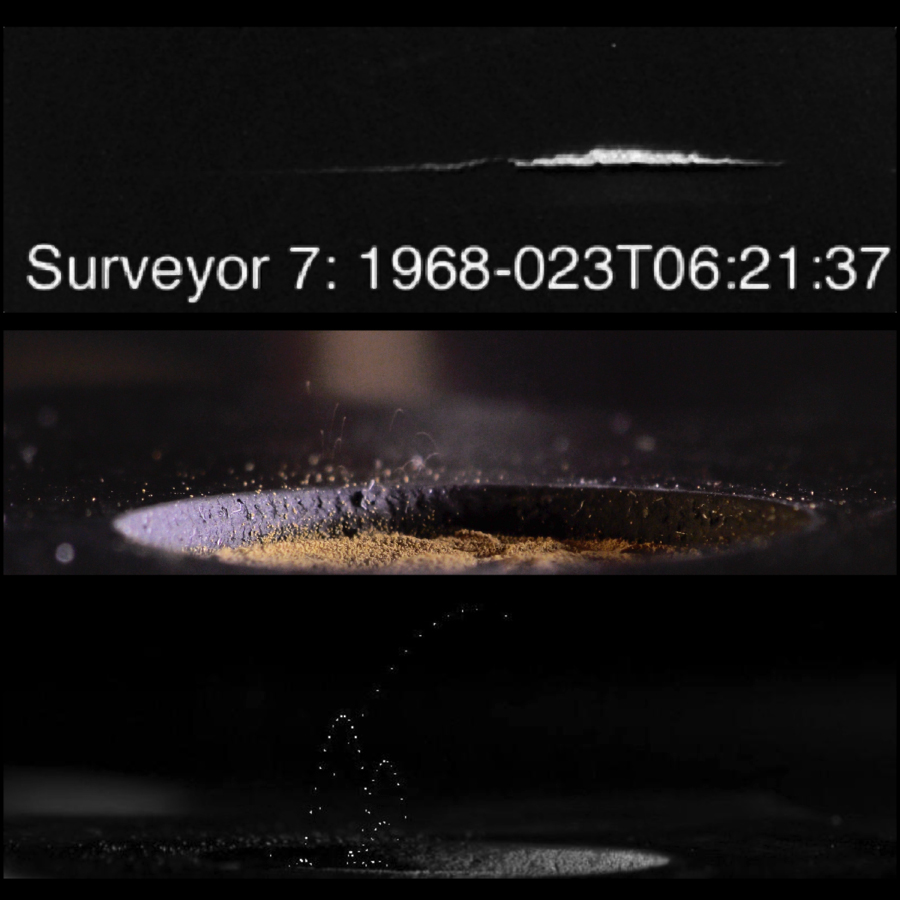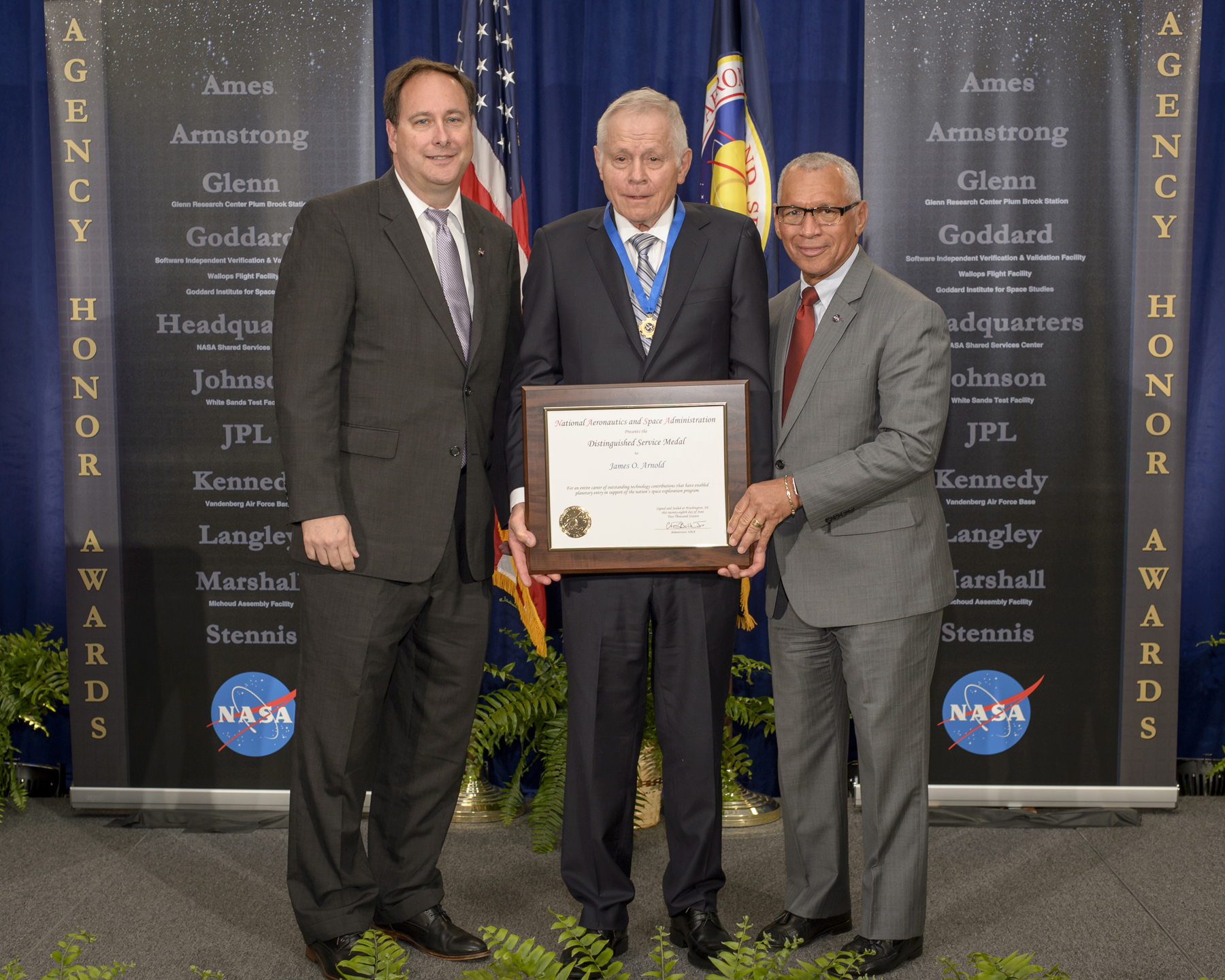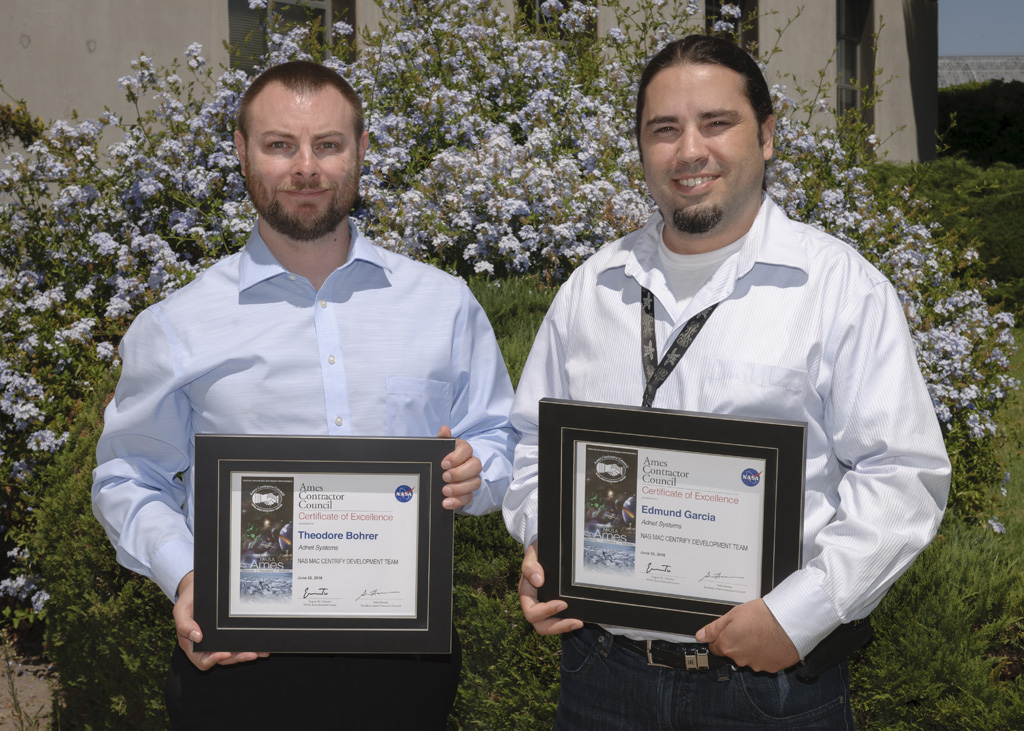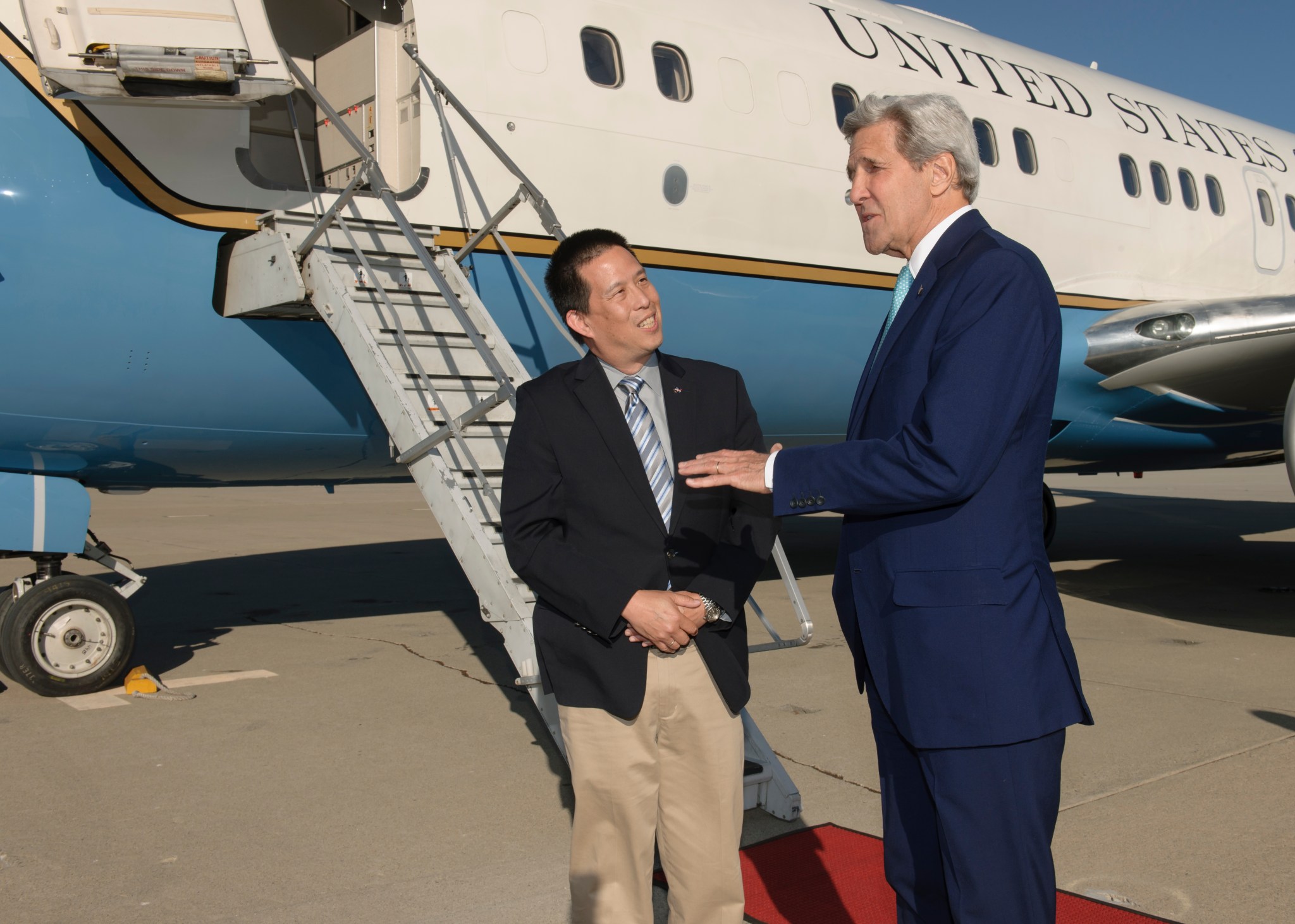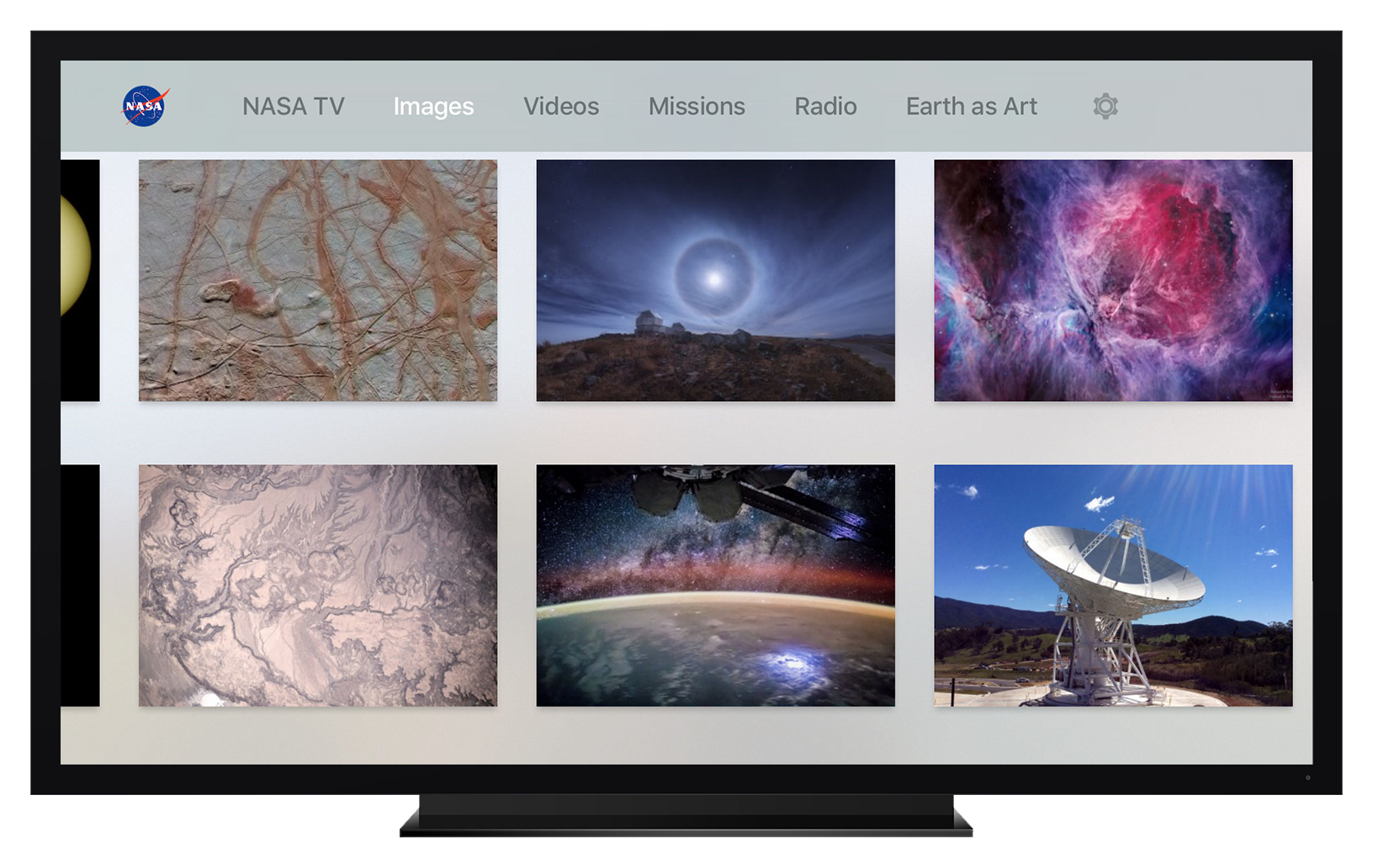Moment of Silence Observed for Orlando Victims
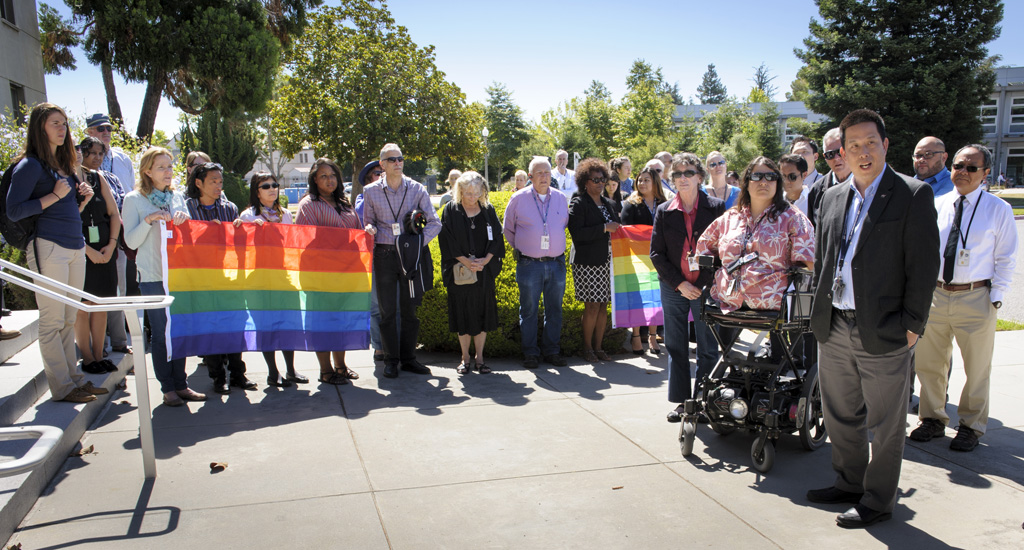
NASA and Starburst Accelerator Partner for Aerospace Startup Pitch Event
NASA and Starburst Accelerator, a leading global aerospace accelerator, partnered for a pitch event about the future of aerospace on June 23, 2016. The event was part of the “Road to GES” in support of the 2016 White House Global Entrepreneurship Summit in Silicon Valley.
Hosted at NASA Ames, this event involved 10 start-ups pitching their businesses and technologies to a selection committee and an audience of more than 300 leaders from aerospace industry, venture capital and government agencies.
“Industry and government can mobilize if there is truly an opportunity,” said Van Espahbodi, co- founder of Starburst Accelerator. “They’re not directly pitching to VC’s [venture capitalists]. They’re hoping to gauge interest in partnering in creative ways, whether its direct investment, resources in kind, or even reverse IP licensing.”
NASA Ames Center Director Eugene Tu spoke about the state of the aerospace and space industry. A VIP panel listened to some of Starburst’s startups who have been through the pitch process and currently are in discussion with large corporate sponsors and investors.
“We’re Ames,” Tu said. “We’re here in the Silicon Valley. This is exactly the type of thing we like to do and want to do. This is a continuation, to see if aerospace is going to be following in the footsteps of tech.”
Preceding the event, media were invited to browse booths featuring NASA technology and startup company proposals.
For more information about the Global Entrepreneurship Summit, visit:
NASA Launches Five-Year Tech Demo to Improve Air Traffic Flow at Airports
by Sharon Lozano
NASA is working toward a greener future in aviation, where airplanes push back from the gate, taxi to the runway and take off much quicker. A more efficient, precise trip by an airplane from the gate to takeoff reduces the amount of time its jet engines spend running on the ground, reduces noise and emissions levels at the airport and reduces the time you spend sitting and waiting to take off.
Before this future can be realized, the tools used today to manage arrivals and departures need to be upgraded. In this Next Generation Air Transportation System (NextGen) world, computers will streamline the sharing of information between everybody involved in arrivals and departures – air traffic controllers, managers, flight crews – so that an airplane’s movements through every point of its flight are more precisely coordinated. Especially at the world’s busiest airports, sharing information between the systems used to monitor an airplane’s flight will be key for more dependable and efficient air travel.
To support the transition to a NextGen approach, NASA is launching a five-year Airspace Technology Demonstration-2 (ATD-2) research and field test effort in coordination with the Federal Aviation Administration (FAA), air traffic management technology companies, and other aviation community partners such as Charlotte Douglas International Airport in North Carolina, American Airlines and members of the National Air Traffic Controllers Association.
“We are excited to show how sharing information between air traffic management systems can benefit airports, airlines and passengers,” said Leighton Quon, project manager for NASA’s Airspace Technology Demonstrations project, which is run out of NASA Ames. “Shared information leads to more accurate planning so we can create a clearer picture to streamline all airport and airline operations.”
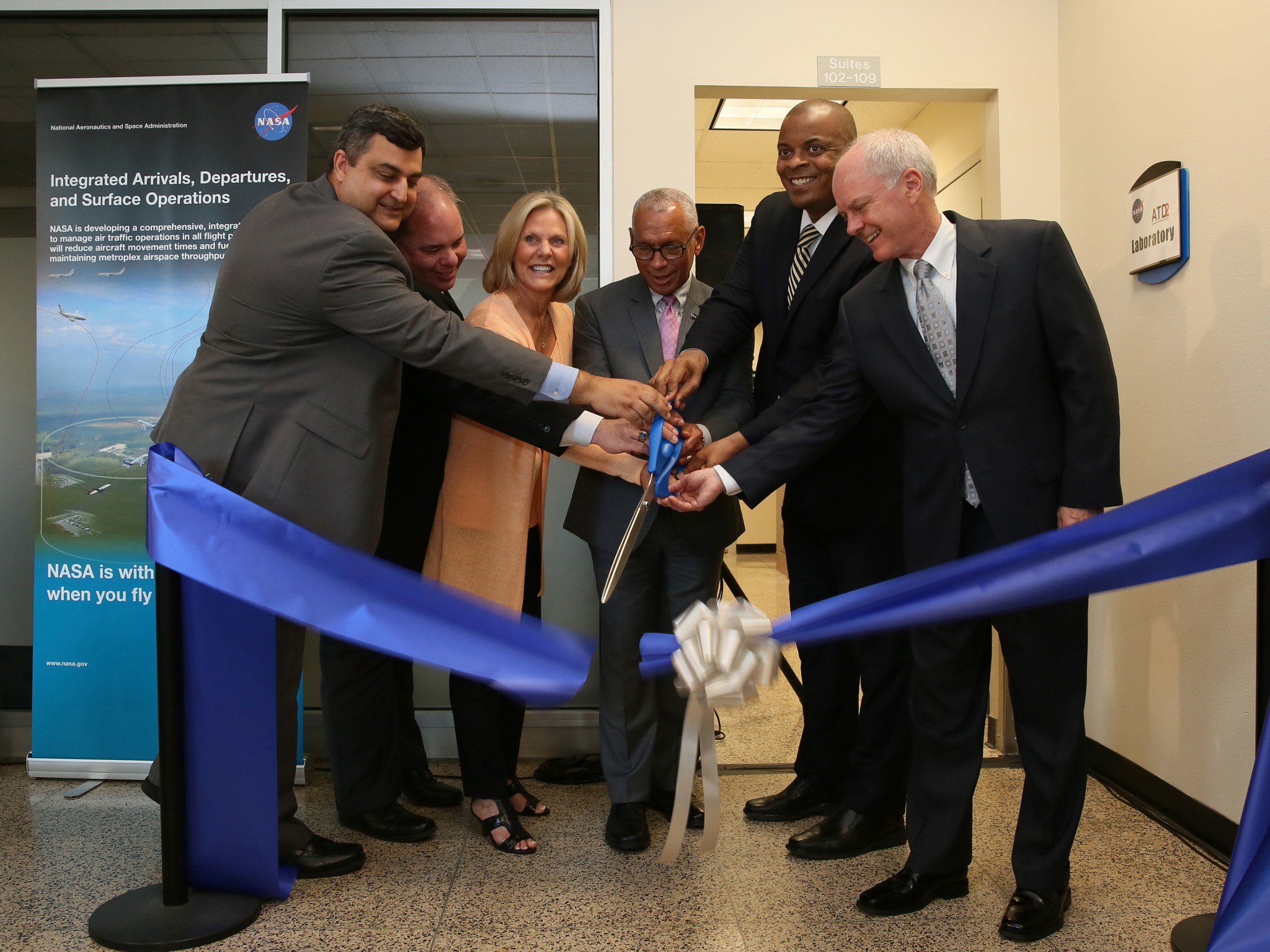
At most airports today, departures are managed on a first-come, first-served basis. Air traffic controllers use two-way radio voice communications to relay information to pilots. These conversations are not shared between multiple users or among the numerous computer-based systems that hold information about different segments of each flight, such as available gates, queues for takeoff, entering the airport’s airspace and more. This can overload runways, causing excessive taxi and hold times.
Technologies that will be tested during ATD-2 will explore how to best use information to better plan and schedule aircraft movement. ATD-2 technologies will connect the people involved in orchestrating the different segments of a flight, and coordinate that flight’s schedules at the ramp, tower, terminal and center control facilities. The ATD-2 computer-driven scheduling tools will help traffic managers make better decisions about how to reduce congestion during the busiest times at airports and improve departure times.
ATD-2 is getting underway at a new research laboratory at Charlotte Airport. The airport’s proximity to other East Coast airports contributes to a “metroplex” type of operation. A metroplex includes one or more commercial airports with shared airspace that serves at least one major city. Charlotte Airport shares airspace with Atlanta’s Hartsfield-Jackson Airport and with Washington, D.C.
American Airlines is the dominant carrier at Charlotte Airport and will be a valuable partner in the ATD-2 testing.
ATD-2 testing will be conducted in three phases during the next five years.
- Phase One: Baseline integrated arrival, departure and surface system demonstration, including FAA’s Surface Collaborative Decision Making concept, at Charlotte and Washington, D.C.’s air traffic control center. Begins September 2017 and evaluations run throughout 2018.
- Phase Two: An expanded demonstration including scheduling scenarios that add Atlanta’s air traffic control center, and a more complete fusion of NASA and FAA technologies. Begins September 2018 and evaluations run throughout 2019.
- Phase Three – Continues field demonstration at Charlotte, Washington and Atlanta air traffic control centers, and begins testing of the Metroplex Coordinator in the Dallas-Fort Worth airport, terminal control and air traffic control center environment as a simulation or field test. The Metroplex Coordinator is the system used to coordinate departures from multiple metropolitan area airports competing for the same constrained airspace. Begins September 2019 and evaluation run throughout 2020.
“Solving the problem at a single airport is not enough. An integrated system that coordinates all the players is needed, and the Metroplex Coordinator does this,” said Quon. “It will be like the symphony conductor making sure all the various instruments, who know how to play their part, come together to perform the full composition.”
NASA expects results from each ATD-2 phase to inform the next. A NASA-FAA Research Transition Team will review findings from each phase; some initial changes to operations at the test sites could be implemented along the way, resulting in some early benefits from this work.
NASA Ames Scientist Teams Conduct Field Tests for Future Exploration Missions
by Kimberly Williams
To prepare for robotic and human exploration of the moon, Mars and other destinations in our solar system, NASA conducted a field research campaign at an Earthly site in the ancient volcanic flows of Idaho June 20 – July 1, 2016, to meet the agency’s Science Mission Directorate (SMD) exploration objectives. Called the Biologic Analog Science Associated with Lava Terrains (BASALT) and Field Investigations to Enable Solar System Science and Exploration (FINESSE), these science-driven research programs are focused on gathering essential knowledge in preparation for exploring the moon, asteroids, Mars’ moons Phobos and Deimos and Mars itself. BASALT field sites include Craters of the Moon National Monument and Preserve, Idaho and Big Island, Hawaii and the FINESSE field sites are in Idaho and Northern Quebec, Canada.
This summer, Idaho’s Craters of the Moon plays host to dozens of scientists and researchers as they collect basalt rocks that have shaped the volcanic landscapes. The NASA-funded teams will use these samples to understand the formation and evolution of the volcanic terrains and to characterize the physical and geochemical conditions of life in these environments and to learn how to seek, identify, and characterize life and life-related chemistry in basaltic environments.
During the 14-day mission, real field science was conducted under simulated Mars mission conditions, including using communication delays of up to 15 minutes and bandwidth constraints that were based on current architectural assumptions for Mars exploration missions.
“By studying the two sites, this research helps to address the question of how do microbial communities and habitability correlate with the physical and geochemical characteristics of chemically altered basalt environments, on Earth and Mars past and present,” said Darlene Lim, principle investigator of the BASALT program, which is led at NASA Ames.
For the BASALT team, the Idaho and Hawaii sites represent two different Mars analogs:
• Recent Mars: when basaltic volcanism is rare and most evidence for volcano-driven hydrothermal activity is represented by the Eastern Snake River Plain volcanic terrains in Idaho.
• Early Mars: specifically Hesperian, when basaltic volcanism and interaction with water were widespread) is represented by the young and still active Hawaiian flows.
The Canadian site represents a relevant planetary analog for impact processes:
• Canada’s West Clearwater Impact Structure is several hundred million years old and provides a unique opportunity for the FINESSE team to study the processes of impact formation and the resultant geology formed by impact events.
• Studying these impact structures and rocks on Earth lends valuable insights to understanding how similar impacts have shaped the surface of solar system objects such as our moon, asteroids and Mars. In addition, FINESSE researchers conducted exploration research to evaluate optimal levels and types of astronaut training required teaching future explorers how to conduct field research of impact sites on the Moon and/or Mars.
“By conducting an integrated research program focused on scientifically-driven field exploration, we can infuse our science program with leading edge exploration concepts that reveal how science enables exploration and exploration enables science,” said Jennifer Heldmann, principle investigator of the FINESSE program, also led by Ames.
These field tests will serve to generate new and cutting-edge scientific, operational and technological capabilities to enable and inform the next generation of human-robotic planetary exploration missions.
Studying analog environments on Earth allows us to learn more about conditions on other planetary bodies in preparation for an eventual journey to the moon, moons of Mars, and/or Mars itself. Lunar and Martian analogs, such as Earth’s active and dormant volcanic terrains, allow us to learn more the geologic processes that have created these volcanic terrains and about the possibilities of finding life in extreme environments throughout the solar system.
Research of the BASALT and FINESSE samples will be necessary for long-term human survival on the moon or Mars. The creation of water reclamation systems, and in-situ resource utilization practices (i.e., “the collection, processing, storing and use of materials encountered in the course of human or robotic space exploration that replace materials that would otherwise be brought from Earth”) are among the chief elements required to ensure survival of humans making the trek to for extended stays on our moon or the red planet.
Operating in analog conditions will allow NASA to gather essential knowledge in preparing for human and robotic exploration of Mars and its moons, our moon and near-Earth asteroids.
To assess their ability to manage their own activities without input from mission control, the field research teams use a mobile mission-planning tool called Playbook, a tool that enables research for future manned deep space missions and increased autonomy by International Space Station astronauts. Previously, Playbook was used on the NASA Extreme Environment Mission Operations missions 19 and 20 where, for the first time, crew members successfully planned their own extra-vehicular missions.
As part of the technology demonstration in Idaho, NASA’s Exploration Ground Data Systems (xGDS) along with Playbook, tracks progress and plans throughout the entire BASALT-FINESSE field campaign. The xGDS, a highly collaborative, interactive suite of web software, synthesizes real world data from sensors, robots, mobile devices, and human observations into digital maps and displays for analysis, decision making, mission operations, and collaboration to support NASA’s terrestrial field science research.
The BASALT and FINESSE field campaigns are also designed to characterize and test field portable instrumentation for both astronaut and robotic use on the moon, asteroids, moons of Mars, and the Martian surface. The research teams are utilizing new technologies in the field to conduct true scientific investigations, and are using the operational lessons-learned to inform future mission architectures regarding the optimal suite of instruments needed on-site to enable scientific investigations at these planetary destinations.
Although FINESSE tests have taken place since 2014, this is the first field test for the BASALT project, with three more years of fieldwork and year-round lab-based testing and analysis planned. Scientists and researchers from NASA and academia will work together to determine what will be needed for the next generation of human-robotic planetary exploration.
Later this year, the BASALT team will head to the 1969-1974 flows along the East Rift Zone (ERZ) of Hawaii Volcanoes National Park on the Big Island of Hawaii, where they will again explore the relationship between basalts and life in this Mars analog environment. This mission also will be conducted similarly to that of Idaho – completely under simulated Mars mission conditions with a team out on extra-vehicular, or EV, traverses that will be supported by an eager science team who must wait to receive signals from the field as they would if they were on Earth and the EV team were on Mars.
BASALT is funded by SMD’s Planetary Science and Technology through Analog Research (PSTAR) program, while FINESSE is funded by SMD and the Human Exploration and Operations Missions Directorate (HEOMD) through the Solar System Exploration Research Virtual Institute (SSERVI) at Ames.
NASA centers involved are Ames Research Center; Johnson Space Center in Houston; Kennedy Space Center in Florida; Goddard Space Flight Center in Greenbelt, Maryland; Marshall Space Flight Center in Huntsville, Alabama; and NASA Headquarters in Washington.
Participants from outside of NASA include: Cornell University; Purdue University; Idaho State University; University of Edinburgh, Scotland; McMaster University and Western University, Canada; Massachusetts Institute of Technology; SETI Institute; Arizona State University; Louisiana State University; University of Hawai’i, Hilo; PISCES; Johns Hopkins University, Applied Physics Laboratory; Korea Institute of Geoscience and Mineral Resources; and the Canadian Astronaut Office.
For more information about future NASA human and robotic exploration missions, visit:
https://www.nasa.gov/directorates/heo/index.html
For more information about the BASALT and FINESSE research programs, visit:
http://spacescience.arc.nasa.gov/basalt/
http://spacescience.arc.nasa.gov/finesse/
3-D Simulations and NASA Supercomputers Help Answer Origin of Stars
by Jill Dunbar
What processes are involved in the formation of individual stars and stellar clusters in our own galaxy and other galaxies? Scientists at the University of California, Berkeley, and Lawrence Livermore National Laboratory are using NASA’s most powerful supercomputer, Pleiades, to create unique star-formation simulations to answer this fundamental scientific question.
Like something from a video game, the simulations zoom through the entire evolution of young star clusters. A giant cloud of interstellar gas and dust collapses under the forces of gravity. Inside the cloud, turbulent clumps of gas form and then collapse. The collapsed clumps form star clusters, and then the magnetized, swirling cores further evolve to form individual or small groups of stars.
These complex simulations seen here (image to the right) — which capture a mix of radiation, magnetic fields, gravity and other physical phenomena — were produced with UC Berkeley’s code and run on the Pleiades supercomputer, located at the NASA Advanced Supercomputing facility at NASA Ames. Currently ranked as the seventh most powerful system in the U.S., Pleiades was critical for obtaining the high-resolution results that match closely with observations from the Hubble Space Telescope and other observing telescopes. Scientists demonstrated the accuracy of the code by performing many independent tests of different elements of physics modeled against real known data.
The science team is enhancing the code to produce new simulations that will allow them to zoom in on the formation of stellar disks — pancake-shaped disks of gas and dust surrounding protostars that are believed to be the first stage of planet formation.
Reaching this goal will require even more computing power. The NAS facility is continuously growing its supercomputing capability to support even higher resolution star-formation simulations — plus hundreds of other NASA mission projects in aeronautics, Earth and space science and exploration of planets and the universe.
For more information about the NASA and to view simulation video, visit: www.nas.nasa.gov
Static Electricity May Transport Dust Across Airless Planetary Bodies
by Kimberly Williams
A NASA-funded research team, led by Mihaly Horanyi at the University of Colorado-Boulder (CU-Bolder), has conducted laboratory experiments to bring closure to a long-standing issue of electrostatic dust transport, explaining a variety of unusual phenomena on the surfaces of airless planetary bodies, including observations from the Apollo era to the recent Rosetta comet mission. The research being done at the Institute for Modeling Plasma, Atmospheres and Cosmic Dust (IMPACT) was recently published in the journal Geophysical Research Letters, and explains how dust may be transporting across vast regions above the lunar surface and rings of Saturn, without winds or flowing water.
“Electrostatic dust processes have been hypothesized to explain these space observations. However, no theories until now were able to support these explanations,” said Mihaly Horanyi, principal investigator for the IMPACT research team.
The team recorded micron-sized dust particles jumping several centimeters high under ultraviolet (UV) radiation or exposure to plasmas. On the moon, these dust particles would have been lofted more than 10 cm above the lunar surface, leading researchers to conclude that the moon’s “horizon glow,” seen in images taken by Surveyor 5, 6 and 7 five decades ago, may have been caused in part by sunlight scattering in a cloud of electrostatically lofted dust particles.
Vaguely similar to the way dragging your feet across the carpet can generate an electric charge, the movement of electrons in the tiny spaces between dust particles can generate surprisingly large charges and forces, which can lift and move dust particles off the ground.
In addition to single particles, clusters of dust were lofted, which showed that electrostatic processes may be responsible for the Rosetta detection of fluffy dust particles released from the surface of Comet 67P.
These laboratory observations reveal that dusty surfaces can become smooth due to dust mobilization and could help explain the formation of the “dust ponds” like those seen on asteroid Eros and comet 67P, and the unexpectedly smooth surface on Saturn’s icy satellite Atlas.
For more information about SSERVI’s IMPACT team and their research, visit: www.sservi.nasa.gov
Bolden Presents NASA’s 2016 Agency Honor Awards
NASA Administrator Charles Bolden presented NASA’s Distinguished Service and Distinguished Public Service Medals, the agency’s most prestigious and distinguished honors, at Ames on June 28, 2016. He stated of Ames, “I’m very proud of the work you do.”
These NASA awards recognize individual employees who have made an extraordinary and indelible contribution to the agency’s mission success. All of these individuals help enable missions to explore and discover both our world and the universe.
The ceremony honored the NASA 2016 Agency Honor Award Distinguished Honorees listed below:
Distinguished Service Medal
Dr. James O. Arnold
Mr. Perry L. Becker
Ms. Jeri Buchholz
Mr. Ricky W. Butler
Dr. Edward R. Generazio
Dr. Linda M. Jensen
Mr. Jack King
Ms. Jennifer C. Kunz
Mr. Michael F. O’Brien
Dr. William Oegerle
Mr. Patrick Scheuermann
Dr. Piers J. Sellers
Mr. J. William Sikora
Ms. Teresa Vanhooser
Distinguished Public Service Medal
Mr. Thomas A. Glavich
Dr. Stamatios Krimigis
Mr. Stephen E. Kulczycki
Mr. Therrin H. Protze
Dr. S. Alan Stern
For more information on the Agency Honor Award Program and the Distinguished Service and Distinguished Public Service Medals, please visit:
https://www.nssc.nasa.gov/awards
Contractor Council Awards Honors Outstanding Contributions to Ames
The Ames Contractor Council (ACC) held its ACC Excellence Awards Ceremony on June 22, 2016. This was an opportunity to honor NASA Ames contractor individuals and teams for their outstanding contributions to the Ames mission. Congratulations to these deserving individuals.
Individual Awards:
Priya Venkatesan (ASRC Federal), Hilary Lansdon (ASRC Federal), Greg Orzech (SGT), Kandy Fabreo-Montelongo (Critical Realm Corporation), Melanie J. Clarke (USRA), Nicholas Riccobono (Metis Technology Solutions), Michael Baumgarten (Logical-R Joint Venture), Sherri Williams (Branden Enterprises), Debra Gobin (Dell Services Federal Government), Blaise Hartman (Bay Systems), Steven Eisele (CSRA)
Group Awards:
ACES – Fixed Wing Team: Eric Ting (SGT), Michael Drew (SGT), Khanh Trinh (SGT), Daniel Chaparro (MORi)
AdvoCATE Development Team: Ewen Denney (SGT), Ganesh Pai (SGT)
Aviation Safety Reporting System: David Austin (Metis Technology Solutions), Oliver Coolidge (Metis Technology Solutions), Stephen Filson (Metis Technology Solutions), Ned Kintzing (Metis Technology Solutions), Gary Brauch (Metis Technology Solutions), Calen Daher (Metis Technology Solutions), Andrew Fuller (Metis Technology Solutions), Thomas Luciano (Metis Technology Solutions), Michael Caldwell (Metis Technology Solutions), Carlo Espinosa (Metis Technology Solutions), Kari Gonter (Metis Technology Solutions), Howard Murphy (Metis Technology Solutions), Trevor Carlson (Metis Technology Solutions), Sky Eurich (Metis Technology Solutions), Jimmy Holmes (Metis Technology Solutions), Oscar Olivera (Metis Technology Solutions), Don Purdy (Metis Technology Solutions), Jeremy Schmidt (Metis Technology Solutions), Samuel Shaw (Metis Technology Solutions), Rick Ulrick (Metis Technology Solutions), Greg Zorbach (Metis Technology Solutions)
NAS Mac Centrify Development Team: Theodore Bohrer (Adnet Systems), Edmund Garcia (Adnet Systems)
NAS Control Room: Leona Chan (CSRA), Chris Grimes (CSRA), Immanuel Chavoya (CSRA), Andrew Chua (CSRA), Brian Do (CSRA), Needa Lin (CSRA), Adam Nudelman (CSRA), Eric Eisenbarth (CSRA), Francis Young (CSRA), Frank Sabadin (CSRA), Vincent Llamas (CSRA), Eddie Diaz (CSRA), Diego Terneus (CSRA), Bond Nguyen (CSRA), Stefani Pineda (CSRA)
Planetary Ventures Program Support Office: Syna Moshggou (AECOM), Barbara Tracey (AECOM), Jin Xiang (AECOM), Brian Lawry (AECOM), David Reel (AECOM), Trina Meiser (AECOM), Wynee Au (AECOM), Margaret Kirksey (AECOM), Richard Ross (AECOM), Alex Hein (AECOM), Christine Wolfe (AECOM), Alex Mofidi (AECOM), Larry Singer (AECOM), Gregory J Hite (AECOM), Jim Daniel (AECOM), Margie Maraist (AECOM), Greg Altberg (AECOM), Joseph Huang (AECOM), Leah Patterson (AECOM), Ali Afrasiabi (AECOM), Thomas Sweet (AECOM), Azita Firouzi (AECOM), Gladys Chandler (AECOM)
ACC Small Business Committee: Gregory J Hite (Ames Contractor Council), Jasmine Ali (Ames Contractor Council)
President Obama and Secretary of State John Kerry Arrive at Moffett
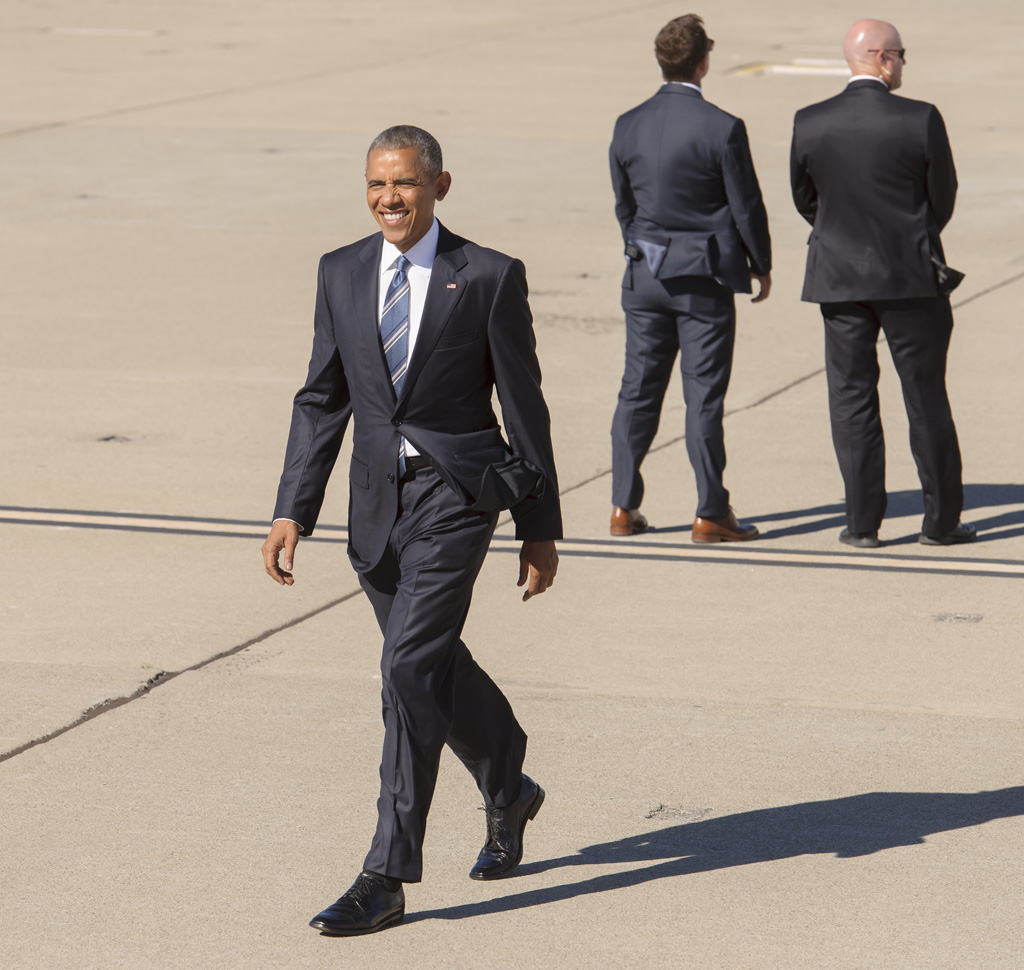
Apple TV? There’s a NASA App for That
The new Apple TV app is the number one “New Apps We Love” on the Apple TV App Store and the number one free app. The agency recently released its popular NASA app for a new platform, the fourth-generation Apple TV. This version joins the app’s other versions available for iOS in iPhone and iPad versions, Android and Fire OS. The NASA app has been downloaded more than 17 million times across all platforms.
“The NASA app has been a fantastic way for the public to experience the excitement of space exploration from their mobile devices,” said David Weaver, NASA associate administrator for Communications. “Now, users with the latest Apple TV can explore and enjoy our remarkable images, videos, mission information, NASA Television and more on the big screen with the whole family.”
The NASA app for Apple TV offers several features for users:
• Watch live streaming NASA TV, and get a real-time view of the Earth from the International Space Station
• View more than 15,000 images individually or as a continuous slideshow
• Play on demand NASA videos
• Find the next opportunity to view the International Space Station and other NASA satellites pass overhead, based on your location.
• Display 2-D and 3-D satellite tracking maps
• Discover the latest NASA mission information
• Listen to Third Rock internet streaming radio
• View the Earth as Art image gallery
The NASA app is available for free in the App Store on Apple TV.
For more information about the NASA app, visit: https://www.nasa.gov/nasaapp
Ames and Army Aeronautics Researchers Receive Franklin Award for Outstanding Contribution to the Powered-Lift Field
by Sharon Lozano
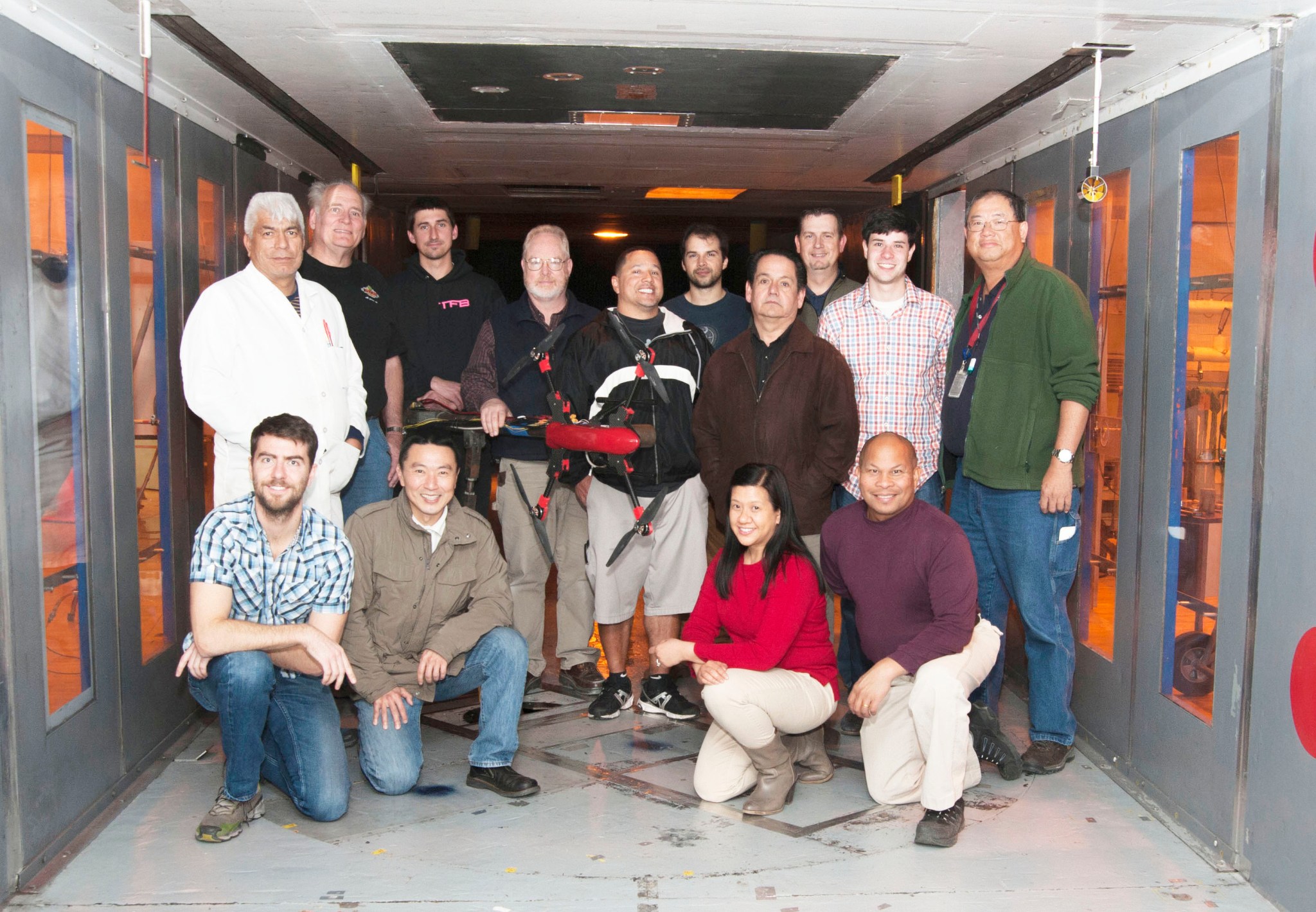
Carl Russell, Jaewoo Jung, Gina Willink, Brett Glasner, Nili Gold, Steve Nance, Bruce Gesek, Bill Peneff and Brian Chan received the Franklin Award for Outstanding Contribution to the Powered-Lift Field, for successful planning and execution of the first wind tunnel test performed to acquire experimental data for performance and acoustics of five multi-copter unmanned aircraft systems in the Army 7-foot-by-10-foot wind tunnel.
Currently, there is a lack of published performance data of multi-copter unmanned aircraft system (UAS) vehicles, or drones. With the rapidly increasing popularity of quad copters and octocopters, NASA is interested in developing models that can accurately predict performance and model trajectories for vehicles at this scale.
A joint wind tunnel test for UAS Traffic Management (UTM), Design Environment for Novel Vertical Lift Vehicles (DELIVER), and Revolutionary Vertical Lift Technology (RVLT) collected performance data in the U.S. Army’s 7-foot-by-10-foot wind tunnel at NASA Ames. The team tested five multi-copter UAS vehicles to determine forces and moments as well as electrical power as a function of wind speed, rotor speed and vehicle attitude. The initial results were presented during the American Helicopter Society International’s 72nd Annual Forum at West Palm Beach, Florida, May 16-19, 2016. The presented work was selected for one of the AHS International San Francisco Bay Area Chapter awards.
Innovative Tools to Encourage Commercialization Discussed at International Convention
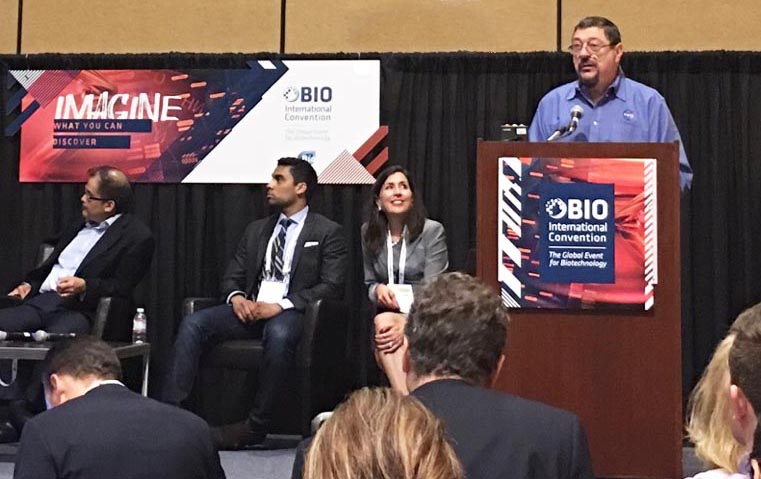
Traveling International Space Station Exhibit Makes Stop at Ames
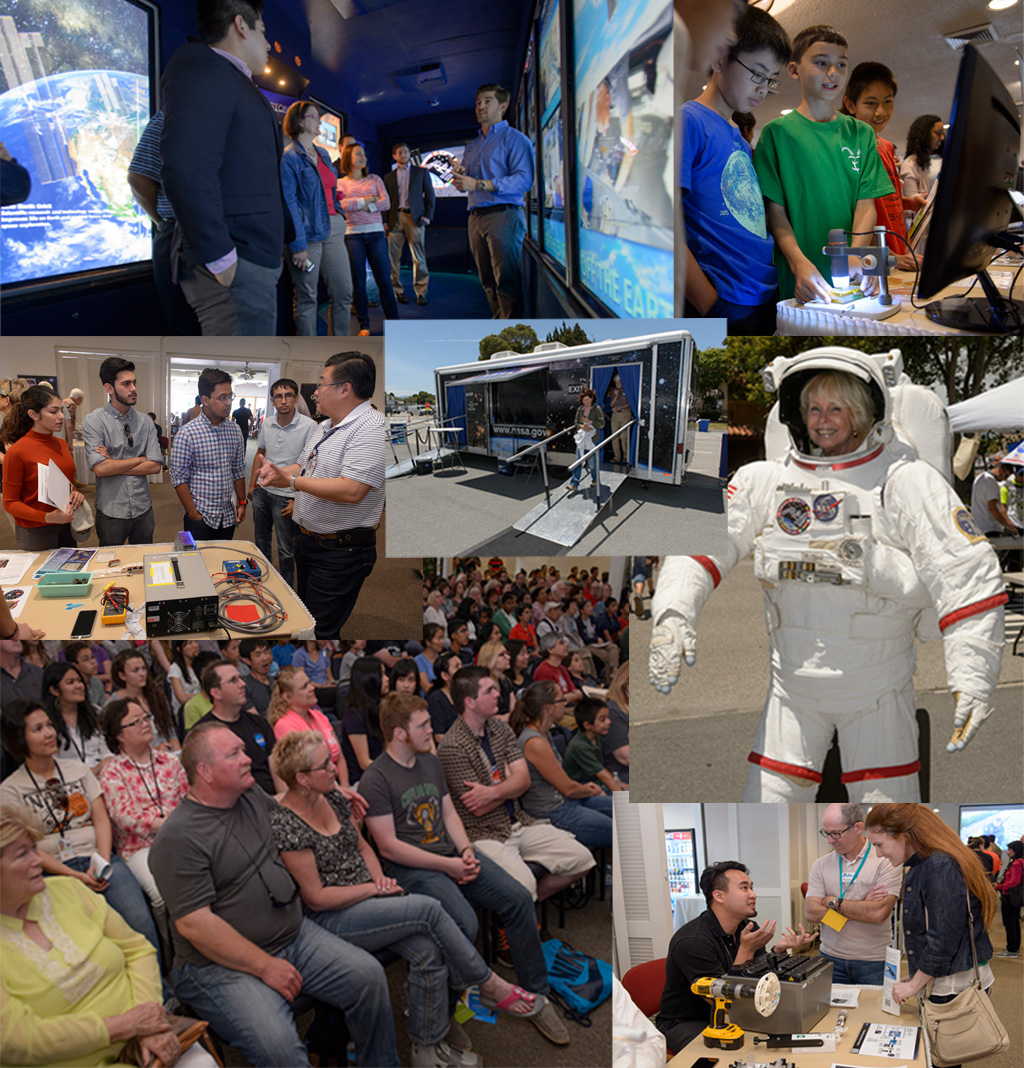
AAAG Sponsors Golf Tournament and Celebrates Juneteenth
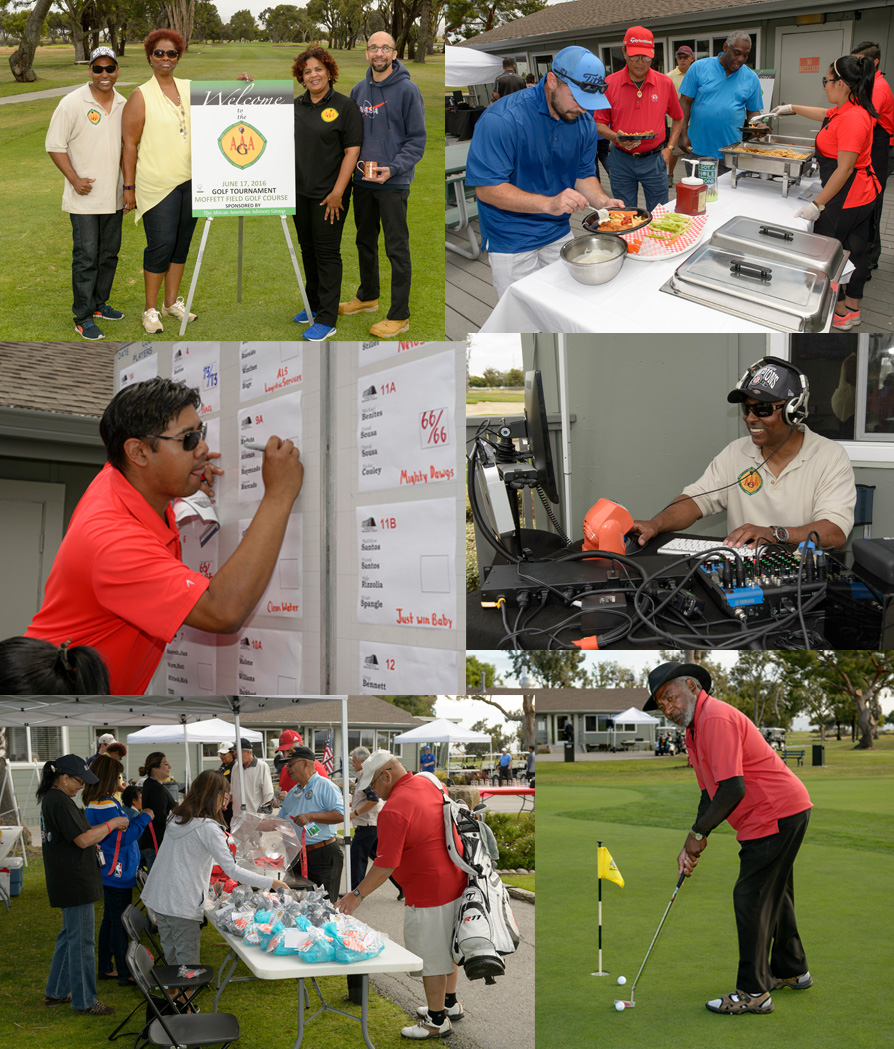
Office of the Chief Scientist Presents Its Summer Series Colloquiums
Each summer, the Office of the Chief Scientist produces a lecture platform with leaders whose high achievements generate innovative discussion, as well as inspire and catalyze scientific progress. This year, the Summer Series consists of seminars by lecturers from NASA Ames, external NASA staff, as well as renowned colleagues who have and will lecture on topics that span across multiple advanced subject areas including space technology and space exploration.
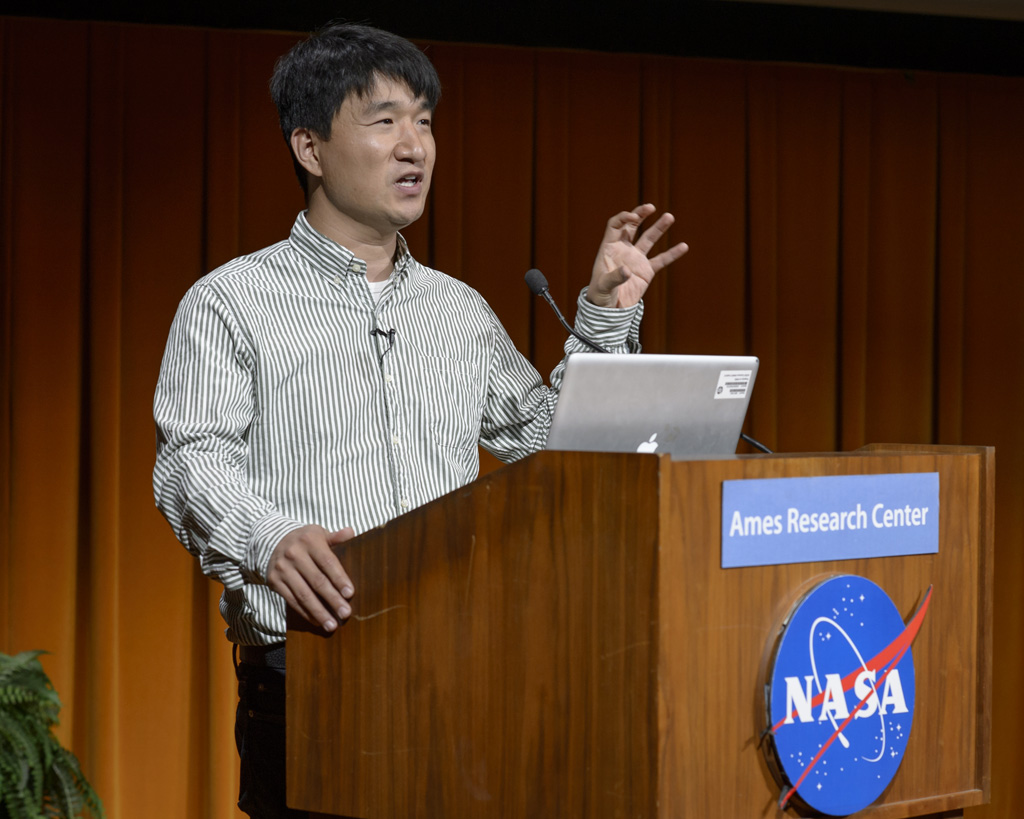
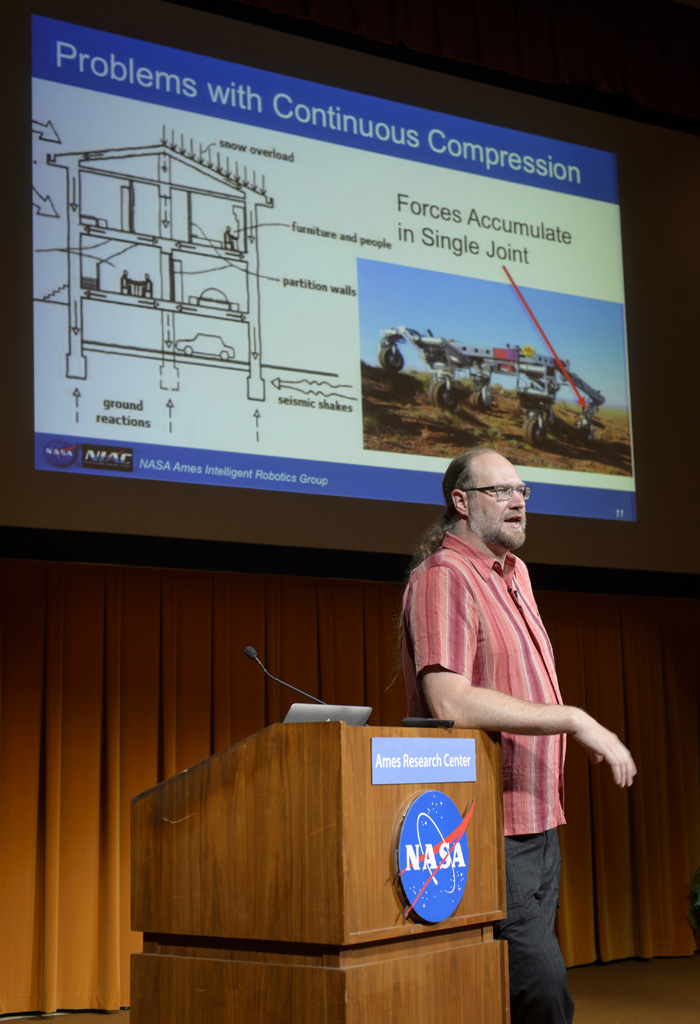
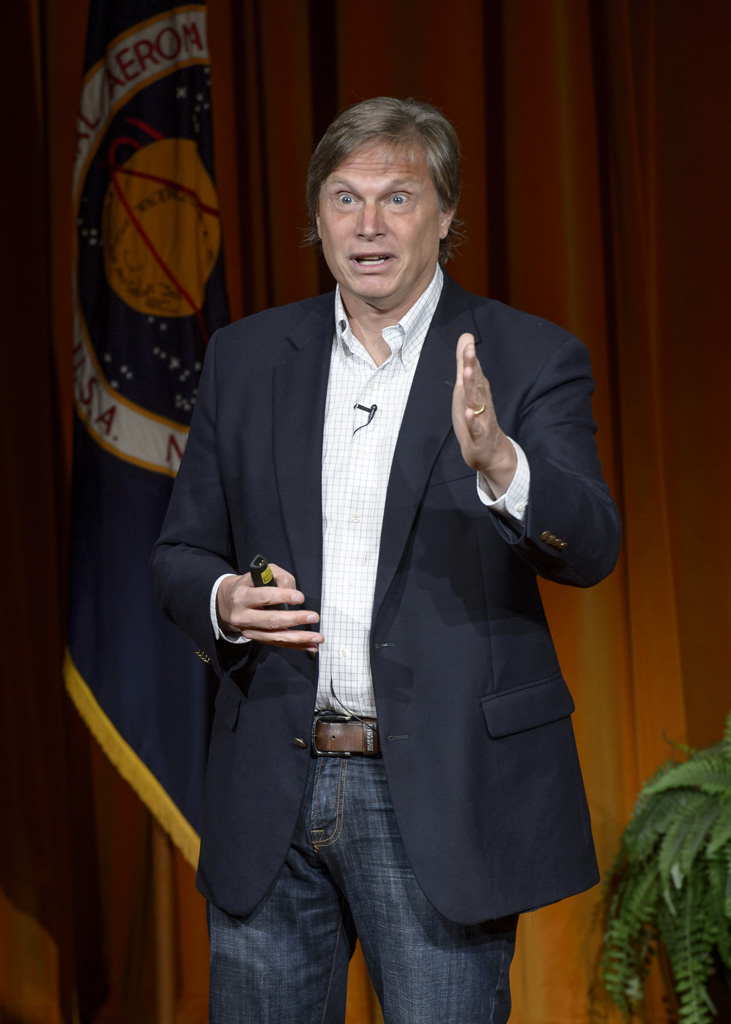
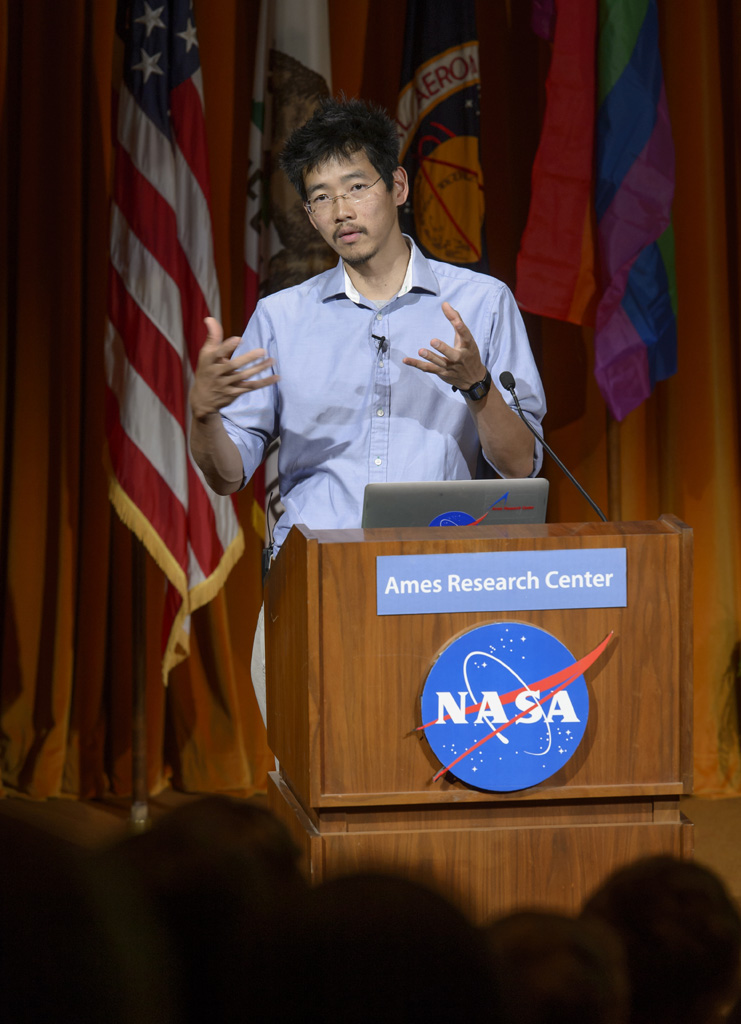
Special Olympics Torch Carried Across Moffett Field
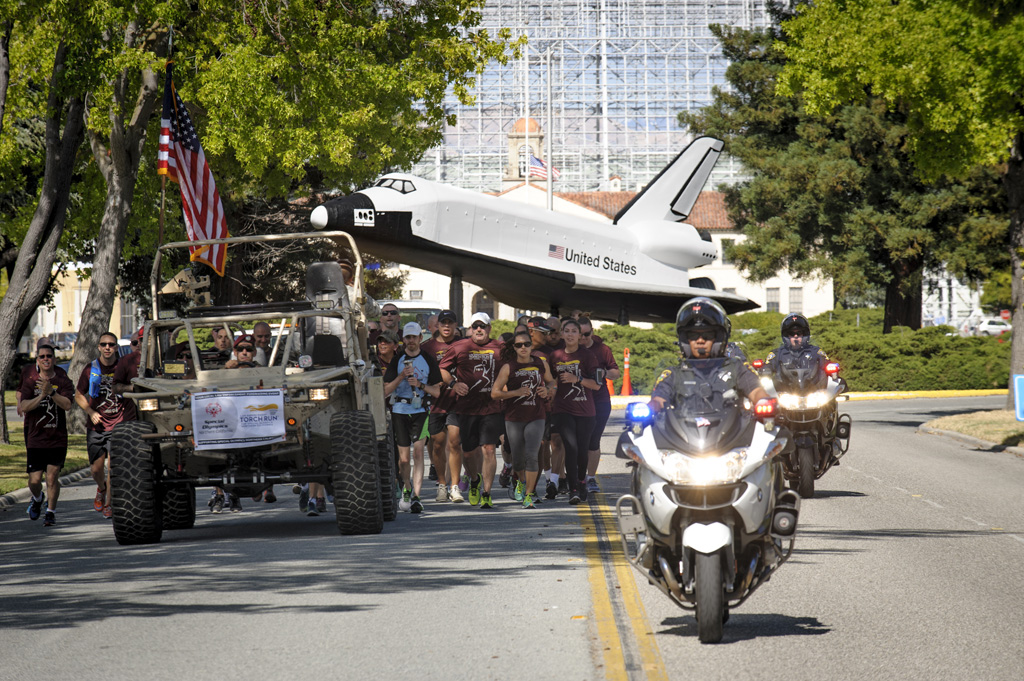
Ames Ongoing Clubs/Monthly Events
Aikido Club at Moffett, Mondays and Wednesdays, Building 944, 6:30 p.m.
POC: Brandon Hagerty, Brandon.Hagerty@nasa.gov, (612) 227-4907
Aikido is a non-competitive, defensive martial art known as the “Way of Harmony.” No monthly dues, just show up. For more information, contact Eric Bosse at Eric.R.Bosse@nasa.gov, (831) 239-7641, or Robert Dean at (650) 787-1007. Classes held in Building 944 (across from the former McDonalds) at Moffett Field.
African American Advisory Group (AAAG) Meeting, last Tuesday each month, 12:00 – 1:00 p.m., Building N-232, Room 225.
POC: Denise Snow, ext. 4-2830.
Amateur Radio Club Weekly RACES Radio Net
Tuesdays, at noon 146.445 MHz Simplex
POC: George Tucker, george.e.tucker.ctr@us.army.mil
For additional information visit: http://www.hamradio.arc.nasa.gov
Ames Amateur Radio Club, third Thursday each month, noon, Building N-T28 (across from Building N-255).
POC: George Tucker, ext. 4-2200.
Asian-American Pacific Islander Advisory Group (AAPIAG) Meeting, Third Thursday each month, 1:00 p.m. – 2:00 p.m., Building N213, Room 204A.
POC: Tony Damian, tony.a.damian@nasa.gov
Beach Volleyball Club
POC: Michael Benning; Michael.j.benning@nasa.gov or Shirley Burek; shirley.m.burek@nasa.gov
For more information about the Ames Volleyball Club, see:
http://exchange.arc.nasa.gov/clubs/index.html
Beer Brewing Club
The club welcomes everyone, whether you just like beer or would like learn to brew, or whether you are a brew master. If you are interested in joining the Beer Brewing Club, please fill out the quick two-minute survey: http://www.surveymonkey.com/s/66B6ZN8
Bluegrass Musicians Club, Tuesdays, at the lunch hour, between 11:30 a.m. –
1 p.m. in Bldg 944 (across from the former McDonalds)
POC: Bob Gisler, bob.gisler@nasa.gov, ext. 4-1365
The Ames Bluegrass Club seeks musicians to practice/jam every Tuesday at the lunch hour between 11:30 a.m. – 1 p.m. in Bldg 944 (across from the former McDonalds). Players of all instruments an all levels are welcome, but we are particularly interested in experienced players willing to help improve the group’s musical skills. At the moment, the group needs banjo, fiddle and dobro players and vocalists with harmony skills. Our goal is to have fun playing bluegrass music and to occasionally perform at various Ames functions.
Ames Bocce Ball Club, Ames Exchange-sponsored club is seeking members.
POC: Mike Lindsay, michael.c.lindsay@nasa.gov
Ames Bowling League, Thursdays, 6:15 p.m. at Fourth Street Bowl in San Jose. Need regular and substitute bowlers. For sign-up questions, contact
POC: Michael Hom, ext. 4-0302 or Mina Cappuccio, ext. 4-1313.
Ames Contractor Council Meeting, first Wednesday each month, 11:00 a.m., Building N-200, Committee Room.
POC: Herb Finger, ext. 4-6598.
Ames Disability Advocates (ADA) Group Monthly Meeting, Second Wednesday of even-numbered Months, Building N240A, Maxi Conference Room, 11:30 a.m. – 12:30 p.m. POC: Dana Bolles, dana.bolles@nasa.gov
The Ames Disability Advocates (ADA) group is striving for a workplace where employees with disabilities and employees with disabled family members are valued, included and given support around managing disability-related challenges. The ADA will hold bi-monthly meetings, every second Wednesday of even-numbered months. Meeting time: 11:30 a.m. – 12:30 p.m., Building N240A, in the Maxi conference room.
Ames Dive Club Monthly Meeting, Meets the last Tuesday each Month, Building 17, (located in NASA Research Park), First floor conference room, 11:45 a.m. – 12:45 p.m.
POC: Jonas Jonsson, jonas.jonsson@nasa.gov
Ames Early Career Network
POC: arc-early-career-owner@lists.nasa.gov
The Ames Early Career Network is a grassroots group that aims to build a community and advocate for early careers across all disciplines at NASA Ames. Our goals include improving communication across the center, providing opportunities for collaboration and professional development, disseminating useful information and resources and inspiring the next generation of space explorers.
Ames Federal Employees Union (AFEU) Meeting, third Wednesday each month, Noon. Building N-204, Room 101. Guests welcome. Check for schedule changes at: http://www.afeu.org
POC: Paul K. Davis, ext. 4-5916.
Ames Fitness Center Offers New Group Exercise Classes: Total Body Conditioning; Kickboxing and Yoga
POC: Victor Gomez, victor.m.gomez@nasa.gov
Come on down and take a free class! WAKE UP CALL! Start your day right on Monday and Wednesday at 6:30 – 7:15 a.m. with Total Body Conditioning. What a great way to get your day going with a nice full body workout, encompassing light weights, cardiovascular, core, balance and stretching.
Punch, Kick, Pow! Having a stressful day at work? Let out all your stress in the Friday afternoon kickboxing class at 12:30 – 1:30 p.m. A total-body workout using boxing gloves, focus mitts, Muay Thai pads, and the punching bag to teach basic kickboxing techniques through simple combinations while improving aerobic fitness, coordination, balance, and flexibility. No prior martial arts experience necessary and no need to feel intimidated: striking maneuvers in this class are only performed on the pads, not on each other.
After a hard day of work, let’s wind down with yoga. The Fitness Center is now offering yoga in the evenings Tuesday and Thursday at 4 – 4:45 p.m. Yoga focuses on strength training and flexibility and is an incredible benefit to your body. The postures are meant to strengthen your body from the inside out, so you don’t just look good, you feel good too!
Checkout all the group exercise classes at the fitness center at the website: https://q.arc.nasa.gov/content/fitness-classes For more information, contact:
Fun Runs/Walks
Join our group every third Tuesday of each month for run/walk
POC: Victor Gomez, ext. 4-5804
Any other questions contact Victor Gomez Ames Fitness Center manager 4-5804. For interested folks it is held near the inlet to the 80-by-120 foot wind tunnel where Boyd Rd. joins Parsons Ave. The runs are either 5K (3.1 miles) or 10K (6.2 miles), and follow a variety of routes around the center. An optional 2 mile course is available for those who would rather walk or have a shorter run. Refreshment and snacks are provided. To be added to the Fun Run mailing list send an e-mail to mailto:arc-runners-owner@lists.nasa.gov or visit the list website at https://lists.nasa.gov/mailman/listinfo/arc-runners. Any other questions contact Victor Gomez Ames Fitness Center manager ext. 4-5804.
Join the Ames After Work Golf League (AAWGL), Thursdays, 4 – 4:37 p.m. and Fridays 2:30 – 3:07 p.m.
POC: Craig Burkhard, Craig.D.Burkhard@nasa.gov
Golf league tee times are Thursdays between 4 – 4:37 p.m. and on Fridays between 2:30 – 3:07 p.m. Golfers can play nine holes or more, daylight permitting. A good reason to join the AAWGL is the convenient location here at Ames. Employees can socialize with their co-workers and friends and enjoy food and drinks afterwards at Tee Minus One. Players will miss rush hour traffic traveling home and the AAWGL helps support the Ames Exchange. If interested in joining the Ames After Work Golf League, please send an email to Craig Burkhard at mailto:Craig.D.Burkhard@nasa.gov
Hispanic Advisory Committee of Employees (HACE) Meeting
First Thursday of the month, Building N255, Room 101C, 11:30 a.m. – 12:30 p.m.
POC: Jeanette Zamora, jeanette.zamora-ortega-1@nasa.gov
The Hispanic Advisory Committee of Employees (HACE) meets the first Thursday of each month, in Building N255, in Room 101C, 11:30 a.m. – 12:30 p.m.
Jazz Band Club Rehearsal, Thursday evenings, Building 944, 5:30 – 7 p.m.
POC: Ralph Bach, ralph.e.bach@nasa.gov
For information about the Ames Jazz Band Club, see:
http://exchange.arc.nasa.gov/clubs/index.html
Ames Meditation Club Meeting, Wednesdays, Building N243, Room 244, 12 – 1:00 p.m.
POC: Leslye Mogford, leslye.s.mogford@nasa.gov
Please join us each Wednesday from 12:00 – 1:00 p.m. in Building N243, Room 244 to experience meditation and quiet contemplation. This space is available to all, from 7:00 a.m. to 5:00 p.m. daily. It is closed on weekends. Regardless of whether you are new to meditation or have been doing it for years, you will find a home at the Ames Meditation Club. The first half hour of this meeting is dedicated to silent meditation. However, our intent is to accommodate all forms of meditation. If you benefit from a guided meditation, feel free to bring it on your mobile device along with headphones and use it during the silent meditation period. Please enter the room in silence and assume your personal meditative posture. Following the half-hour meditation period, we share experiences, explore meditation practices and discuss approaches to dealing with the stresses of daily living. You are free to leave at any point during the club meeting, there is no requirement to remain for the discussion.
Model Aircraft Club
POC: Mark Sumich, mark.sumich@nasa.gov
For information about the Ames Model Aircraft club, see:
http://exchange.arc.nasa.gov/clubs/index.html
Native American Advisory Committee (NAAC) Bi-Monthly Meeting, First Thursday each month, 11:00 a.m. – 11:45 a.m., Building 19, Room 1096.
POC: Anita Abrego, Anita.I.Abrego@nasa.gov, ext. 4-2565.
Ames Nimble Knitters Club, every Monday, Building N210, Room 103,
11:30 a.m.
POC: Diane Alexander at ext. 4-3140 or diane.alexander-1@nasa.gov
Come learn to knit or share your knowledge with other knitters. We have knitted scarves, hats, socks, bags and practiced a variety of color techniques and crochet. Lending library of books and equipment is available. For more information, please send email to: Diane Alexander, club president, at diane.alexander-1@nasa.gov
Racquetball Players, All Levels, Play at Ames
POC: Terry Howard, terry.howard@lmco.com
Looking for racquetball players, all levels, to play at the Ames racquetball court (next to the baseball locker rooms). Contact Terry Howard 408-742-9293 or terry.howard@lmco.com for additional information.
Roller Hockey Club
POC: James Prunty, james.a.prunty@nasa.gov
Come join the Ames Roller Hockey Club, which meets daily from noon to 1 p.m. at the rink on the north end of the 80-foot-by-120-foot wind tunnel. Games are 3 on 3 or 4 on 4, depending on the number of skaters present. We play a no-checking game, with emphasis on good sportsmanship. Players should have experience skating and wear standard protective equipment. If you are interested in playing, please send an email to the POC listed above, and your name will be placed on the mailing list for game announcements.
Safety Committee
Third Thursday of the month, Building N237, Room 200, 10 – 11 a.m.
POC: John Livacich, John.A.Livacich@nasa.gov
The Ames Employee Safety Committee serves as a forum for both civil servants and contractors on safety issues. Employees can contact John Livacich at ext. 4-3243 if they have a safety concern that is not being addressed. Any civil servant or contractor is welcome to come to the meetings.
Ames Sailing Club, Meets typically on the second Thursday each month (April through October), Building N243 Rotunda, Room 180, 11:45 a.m. – 1:00 p.m. Subscribe to our mailing list at: https://lists.nasa.gov/mailman/listinfo/arc-sailing-club
Softball Club, Chase Park, May – August, 5:30 p.m.
POC: William Caldwell, WilliamCaldwell@nasa.gov
For more information about the Ames Softball Club, see:
http://exchange.arc.nasa.gov/clubs/index.html
Tennis Club
POC: John Nguyen, John.F.Nguyen@nasa.gov
For more information about the Ames Tennis Club, see:
http://exchange.arc.nasa.gov/clubs/clubs_tennis.html
Toastmasters, Mondays – Practice and Improve Your Public Speaking,
Building 262, Room 100, 12 noon – 1 p.m.
POC: David Marshall, david.marshall@nasa.gov , ext. 4-3406
For information about the Ames Toastmasters Club, see:
http://jetstream.freetoasthost.com
Veterans Advisory Committee (VAC) Meeting, Second Wednesday each month, Building N232, Room 103, 1:00 – 2:00 p.m.
POC: Ivan Alvarez, ivan.m.alvarez@nasa.gov
Ames Walking Club (Tues and Thurs) – Ames Volleyball Courts, 11:30 a.m.
POC: Orion Spellman, orion.spellman@nasa.gov
The Ames Walking Club will meet at the volleyball courts near the Health Unit (across the street from Mega Bites Cafe). When? Every Tuesday and Thursday at 11:30 a.m., the Walking Club will depart for a ~2 mile walk around the Ames perimeter. The walks will be led by Orion Spellman whom, if you do not already know him, will be identifiable by his wide-brimmed sun (or rain!) hat and workout attire. Walking is a great way to add some light activity into your day to re-energize your routine, so feel free to pull your coworkers away from the office and bring them along for these walks as well! Email Orion if you have any questions or would like to be included on the Walking Club email list.
Weight Watchers Session, Thursdays, Building N213, Room 204A, 11:50 a.m. – 12:30 p.m.
POC: Herb Finger, hfinger@mail.arc.nasa.gov or ext. 4-6598
If you are interested in joining a 12-week session ($156), please contact Herb Finger (hfinger@mail.arc.nasa.gov). In the interim, we are meeting (without Weight Watchers) every Thursday around 11:50 a.m. – 12:30 p.m. in Building N213, Room 204A to weigh in and continue our accountability. It’s free, so feel free to join us.
Women’s Influence Network (WIN), Meetings every Third Wednesday of the month, Building 244, Room 209, noon to 1:00 p.m.
POC: Ali Guarneros Luna, ali.guarnerosluna@nasa.gov
For information about the Women’s Influence Network at Ames, see:
http://www.eo.arc.nasa.gov/win.html
NASA Ames Exchange Information
Information about products, services and opportunities provided to the employee and contractor community by the Ames Exchange Council. Visit our web site at: http://exchange.arc.nasa.gov
Beyond Galileo Gift Shop N-235 in the cafeteria, 8:00 a.m. – 2:00 p.m., ext. 4-6873
Visitor Center Gift Shop (Exploration Center), Tues-Fri, 10:00 a.m. – 4:00 p.m., Sat. – Sun, noon – 4:00 p.m., ext. 4-5412
Remember to purchase your baby shower, birthday and holiday gifts at Ames’ two gift shops!
Mega Bites Cafeteria N-235, Manager Jason Hamed, ext. 4-5969, Mon – Fri, 6:00 a.m. – 2:00 p.m., ext. 4-5969/Catering contact Karen Mcintyre, 650 444-2241
The SpaceBar: Subs & Burgers, Bldg. 3, Hours are: Mon – Fri, from 11:00 a.m. – 7:00 p.m. See: http://exchange.arc.nasa.gov/cafe/menu.html for menu items.
NASA Lodge (Bldg. 19) (650) 603-7100
Where to stay when you’re too tired to drive home? What about the lodge?! Current Rates: Bldg. 19 (43 rooms), rate: $65/night ($5 each additional adult); Bldg. 583 A&B (150 rooms), rate: $55/night ($5 each additional adult); B547 rate $60/night (for large groups)
Ames Swim Center (N-109) (650) 603-8025
The swimming pool is now open. Hours of operation are as follows (lap swim only): Mon – Fri, 10:00 a.m. – 1:00 p.m. and M-F 3:00 p.m. – 6:00 p.m. The pool is heated year round. POC: Ryan Storms, pool manager (650) 603-8025. Memberships: Yearly access $350, 3 Month $100, Single day use $5
Exchange Basketball Gym, Building 2, POC: Manager Bryan Henshaw, (650) 603-9717, Hours of operation: Mon – Fri, 11:00 a.m. – 1:30 p.m. and M-F 4:00 p.m. – 7:00 p.m. The basketball gym is a full NBA regulation size court and is free to use.
RV lots available. Call to reserve a space at (650) 604-0698. Civil Servants and Active Military $50/month. Contractors and Retired Personnel $100/month
Chase Park reservations, call ext. 4-4948
NACA Park reservations, call ext. 4-4948
Ames Emergency Announcements
To hear the centerwide status recording, call (650) 604-9999 for information announcements and emergency instructions for Ames employees. You also may listen to 1700 KHz AM radio for the same information.
Ames Cat Network
The Ames Cat Network needs help finding homes for cats trapped at Moffett. They range from feral to abandoned/lost pets. They are tested, altered and inoculated. Call Iris at ext. 4-5824 if you or someone you know are interested in fostering or adopting a cat.
National Aeronautics and Space Administration
Ames Research Center
Moffett Field, CA 94035-1000
The Ames Astrogram is an official publication of Ames Research Center, National Aeronautics and Space Administration.
Managing Editor………………….Matthew Buffington
Editor, Layout and Design……………Astrid Albaugh
Employees can reach the Astrogram Office via email at: astrogram@mail.arc.nasa.gov or by phone at ext. 4-3347.































